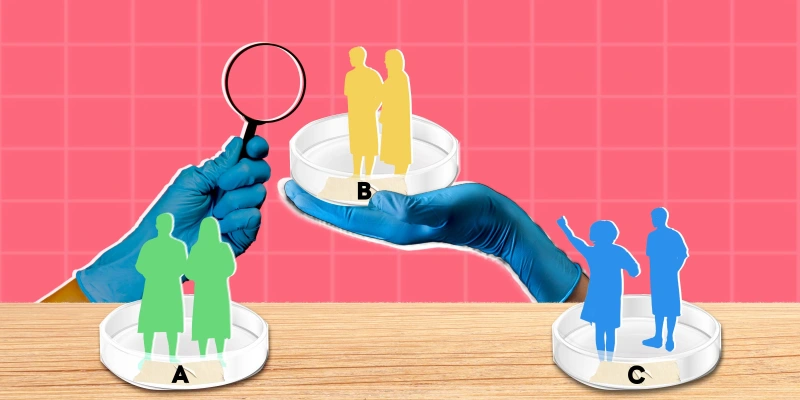
An AAPA member and Huddle follower, recently commented on the topic of malpractice insurance and the cost differences between PAs and NPs. This thread began with a comment that NPs were paying much less for malpractice coverage than PAs, though coverage specifics, such as medical specialty, coverage limits, features, benefits, and exclusions — not to mention the insurance provider’s experience in underwriting health care professional liability coverage — were not outlined.
One person replied to this by simply stating, “There are so many more NPs out there that they get a much better economy scale … it’s as simple as that! If we had 300,000 PAs in the risk pool, our rates would be much lower.” Indeed, this is very true — the size of a risk group and their collective claims history are factors in establishing individual insurance rates within high quality, long-term, sustainable programs. But for NPs, the story is bigger and goes back decades.
When the NP profession emerged back in the 1960s, this small group of advance practice nurses were grouped and rated by the insurance industry as “nurses” and until recently this status has remained pretty much unchanged. So, when you combine the country’s more than three million registered nurses with nurse practitioners (also known as advanced practice registered nurses), that single risk pool has been enormous. Hence, NP rates have historically been much lower than PAs, who have always been classified as a distinct and smaller group of health care professionals. But things are changing.
With the tremendous growth of the NP profession (and resultant insurance claims), NPs are now being removed from most former nursing portfolios of risk, into their own group. In fact, one of the country’s largest insurers of NPs has recently increased their rates substantially to reflect this new, smaller risk pool. Despite their being roughly 50% more NPs than PAs in the U.S. — rates and premiums for both will continue to align and converge over the coming years. Their duties and responsibilities have them working hand-in-hand on the frontlines of healthcare with increasingly similar liability exposures in many areas of specialization, but there are other very important elements which can impact cost differences.
With a shrinking U.S. physician market and an expanding PA market, some insurance companies see fast profits. They might attempt to “underprice” their PA product initially to quickly build as large a group as possible to offset the inevitable future losses. But this often-attempted Ponzi scheme never really works. Eventually, too many insurance claims are made on underpriced policies and one of two things will occur: insurance rates increase dramatically, or the insurance company simply exits the market, leaving their insured high and dry to scramble for new replacement coverage – fast. Sadly, such schemes have persisted off and on for decades in the business and insurance world. Prudent PAs and NPs should always choose an insurer with long-term malpractice experience and only those with expertise and commitment to health care professionals. Malpractice insurance requires rigorous underwriting and is not a product for day traders. An insurance program that is properly designed, developed, supported and priced realistically will be there to guide you for the long haul and protect your interests especially if and when you are sued.
One of the key features to be aware of when comparing malpractice insurance policies involves the insured’s “consent to settle” (or not) a claim against themselves. Many companies have what is called a “hammer clause.” This clause gets its name from the power given to the insurer to force the insured to settle, much as how a hammer is used against a nail. A hammer clause states that if the insurance carrier wants to settle a claim (versus a protracted legal battle) and the APP wants to fight for their good name, the insured APP must decide if they are willing to pay the difference should the claim settle for a higher sum than the insurance company is willing to pay. This could be financially devastating and likely discourage most APPs from defending themselves – even if they believe that they did nothing wrong.
Also, what about defense costs? Most companies will pay these, though some may include legal defense as part of their total limit of liability, while others may place a cap or top limit for legal defense. This could mean that if you have a $1,000,000 limit of liability and the case settles for $1,000,000 and your legal fees are $200,000, the insured would be responsible to pay these legal costs out-of-pocket. Again, another potentially devastating reality that could lead to personal bankruptcy. An insurance policy that pays defense costs in addition to the limit of liability will surely cost a bit more, but that feature alone makes it invaluable and could mean the difference between solvency and financial ruin.
It should also be noted that liability claims – across all industries (health care included) – have been growing in recent years. This is less a result of genuinely diminishing service and more a product of social change. Our collective culture seems to be growing at warp speed, and with such rapid progress come heightened expectations. And increasingly, when expectations are not met someone is often asked to pay, typically in the form of a lawsuit.
So, whenever any PA or NP is buying malpractice insurance, I advise, let the buyer beware. Take the time to know what you are buying and from whom — and understand that malpractice insurance is not a one-size-fits-all product. Choosing an insurance provider with a long APP track record is critically important. These are experts and not day traders looking for quick profits. They understand their client’s real needs and exposures and have weathered the business cycles of the industry. The AAPA for instance, has researched the market for quality & value and awarded their endorsement to CM&F Group who have been health care malpractice experts for over 70 years. Unlike many insurers who have come and gone over those years, CM&F remains committed to PAs, NPs and dozens of allied health care professionals today and for decades to come.
Image by Lightspring / Shutterstock







